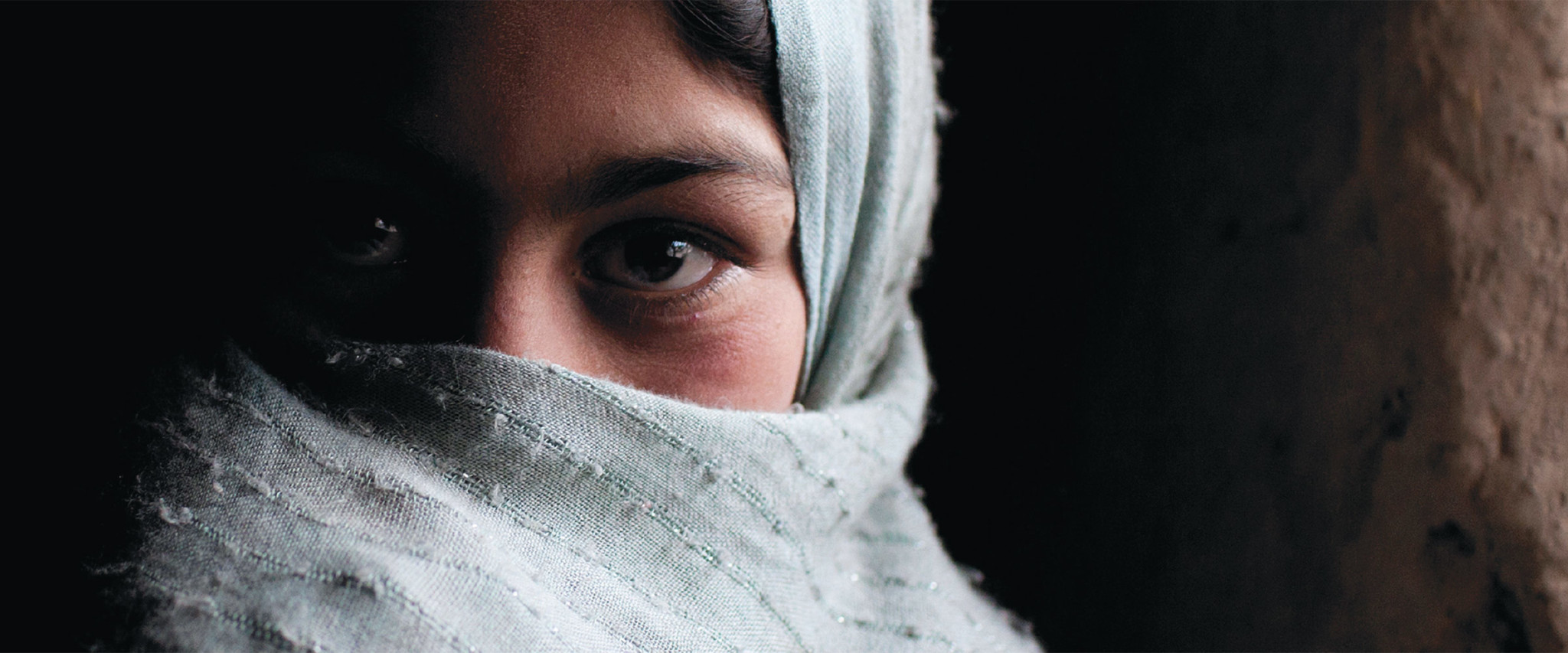The snow falls in thick, wet flakes, sticking to the ratty sweaters and frozen eyelashes of the children of Nasaji Bagrami refugee camp on the edge of Kabul. It settles in sheets and obscures the low mud brick walls of the camp and blankets the emergency tarps serving as the roof for each hut. Mud—stark black against the bright white—oozes up through the toes of barefoot children where the snow is packed down around a clothing distribution point.
The camp is one of more than 40 around the city, and the hovel in which four-month-old Khair Mohammad froze to death this February is no different from any other—neither in its poverty, nor in its despair. When I arrive, Sayed Mohammad, the infant’s father, struggles to secure a tent peg in the frozen ground to keep the snow from collapsing his fabric roof. I’m taken to the mosque, where men have gathered to talk to me. It is a shabby, whitewashed building with a dirt floor and no heat. As they crowd in, their breath frosts the air. They talk of their troubles, but it is their anger at the government’s inaction over the freezing deaths of some 24 children during the first two months of 2012 that quickly rises to the top.
The wind flaps at the plastic covering the windows. Here, no one looks toward the future; they have enough to do trying to eat from one day to the next. And the complaints aired at this gathering are not unique to this camp. That is why this situation matters. It matters because these people, like the impoverished sharecropper and taxi driver, are members of the most at-risk segment of the population—a majority in a country that ranks 172 out of 187 countries on the United Nation’s Human Development Index. And they matter to the international community because insurgent groups feed on youth radicalized by desperation and on poor farmers who have not been able to turn to the government for support in a decade.
The U.S. foot patrol starts out early to avoid the already blistering spring heat of southern Afghanistan. Bunching up and stringing out, the squad files down the sunbleached alley, shuffling through ankle-deep “moon dust” as fine as talcum powder. The high mud brick walls on either side keep the patrol separated from the dense pomegranate orchards and grape vineyards that are the lifeblood of the farmers here in Kandahar Province, but the walls also keep the soldiers from being able to see an enemy until it is too late. You can feel the tension in the silence of the troops. After a half-hour, we turn off the dirt road and head through the fields. We pass from the dark green shade of the orchards into the blazing sun of an open field. Men wearing the traditional, baggy shalwar kameez shirts and pants hunch in the fields, planting okra. As the soldiers slip through the deep muck of the freshly watered fields, trampling the young plants as they go, the farmers mutely stare at them. The silence is broken only when a sergeant laughs and shouts to the farmers in English, “How do you like that, man?” The poorly dressed farmers stare at the soldiers, rigged out in their helmets, body armor, rifles, hydration packs, boots, and radios—walking as gracefully as astronauts on Jupiter.
Some say Afghans should pull themselves up by their own bootstraps—a tall order if all you have to start with are bare feet in the snow. But it’s clear, to me at least, that after more than 30 years of war (first purges by the Afghan Communist Party, then an invasion by the Soviet Union and the mujahideen insurgency, then a brutal civil war between warlords, then the rise of the Taliban, and finally the U.S. invasion in 2001), Afghanistan needs some kind of assistance.
But the way the war is run makes helping hard—even with the supposed adoption of counterinsurgency theory and the “hearts and minds” campaign. “We haven’t fought a 10-year war, we’ve fought ten one-year wars,” says Jesse Wolfe, a U.S. State Department adviser in Arghandab District, Kandahar Province, who served two tours in Afghanistan as a Marine infantry captain and then went on to do aid work in Cambodia. His statement, common at think tanks and among military officers, sums up the truism that soldiers cycle out of the country after six to twelve months (almost as true of many aid workers), only to be replaced by new troops or aid workers utterly lacking in knowledge of local politics and relationships with key leaders. These shortcomings are then compounded by the distance between American norms and the myriad cultures of Afghanistan, as well as “force protection” measures that are intended to protect military and civilian aid workers, but that in reality create insurmountable distances between them and the population they should be serving. The problem is apparent in everyday interactions between U.S. soldiers and the Afghan people.
Later in the week, I’m on another foot patrol. This one is led by Lt. Mike Viti. A graduate of West Point, he gave up a slot with the Buffalo Bills to go to Afghanistan. As we’re slowly patrolling down a gravel road near the Arghandab River, two young men are spotted coming out of a pomegranate orchard. Viti jogs up the line and begins to question the two men, who are carrying shovels. He pushes hard to try and figure out what they are doing there—since the orchard has been a hiding spot for insurgent weapons caches in the past. But the questioning gets bogged down because the Afghan interpreter does not quite get the gist of Viti’s questions. In the end, an Afghan Local Policeman (ALP)—the newest incarnation of an effort to lightly train and arm local pro-government fighters—ambles down the road wearing civilian clothes, parts of a uniform, and a decorated AK-47 rifle. He explains to the interpreter that these men are his sons and that they were hired to tend the orchard. Viti, frustrated but keeping his cool, has to take his new ally at his word, even though he can verify only by instinct what the militiaman is saying. The two young men are walked to the local ALP checkpoint and let go.
In Arghandab, the scene of some of the heaviest fighting of the war, President Barack Obama’s troop surge has worked— for now. The belt of rich farmland went from being a Taliban stronghold, to a bloodily contested battleground, to an area of relative stability starting in the spring of 2011. But small, everyday incidents like these—crushing plants and lack of language—strain relations between soldiers, farmers, and their erstwhile allies—the Afghan police, soldiers, and militias. In the end, all the sides know that the U.S. and NATO forces will leave—and the Afghans will be left to settle scores on their own.
For the most part, the scores are already being settled— right under the noses of the American soldiers: Masked gunmen on motorcycles execute vendettas; rulings by Taliban “shadow governors” are implemented through intimidation and night letters; and fistfights break out between ethnic Tajik and Pashtun soldiers forced to share the same small U.S. base. The fissures are there for all to see, and they are widening every day.
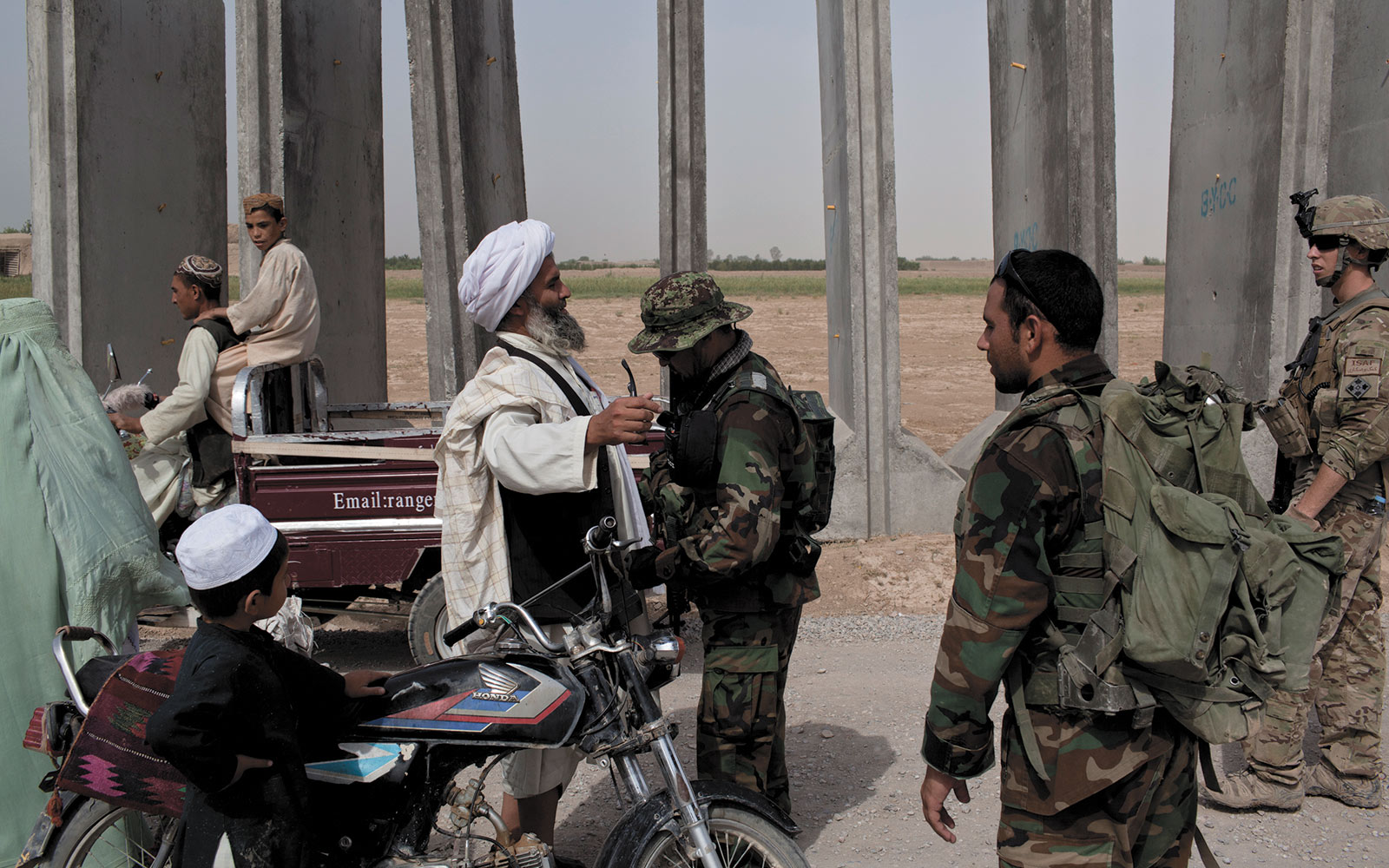
“[Our children’s] future will not be any different from how we live now. They will never go to school. They can’t go to school. There are no schools. There are no clinics. They will be illiterate. They will be uneducated. They will have the same condition as us,” says Wali Khan, a farmer from Helmand Province. Maybe more troubling, in terms of Afghanistan’s future, Wali Khan adds, “We don’t care who is in power; we only care for a person who can take care of us. Karzai has been in power for 10 years, and he has not sent any official, any person here to look at the situation we have here. We have children dying. We have a bad situation. Even though he’s from Kandahar himself, from my homeland, he doesn’t care. We don’t like these kinds of people. We don’t care if the Taliban is here or other kinds of people; we only like the people who can help us.”
It’s not only these internally displaced people (as refugees who have not left their country are called) who are worried. “If the international organizations leave, who will help these people?” asks an aid official who works at the camps. “We’re the only ones.” Then he adds, “The future for these children is the
most uncertain. The only thing that can save them (in the long run) is school, and not just primary school. I wonder how it will be for those kids in 20 years? If no one takes care of them, they will turn to violence because their country has abandoned them somehow. The government has to wake up. They want to close their eyes to the problem. They want to remove it. And this solution is too easy. You can’t just remove the parasite.”
This is a country in upheaval, divided within itself anddeeply broken—shattered by internal and external forces. The mood in Afghanistan ahead of the 2014 withdrawal of U.S. and NATO troops can only be described as expectant. Like an audience watching a magician slide a needle through a balloon, it is leaning away with gritted teeth and squinted eyes, ready for the inevitable pop—but expecting the magic trick to work, somehow, expecting that the fragile membrane of the balloon will take the needle and still hold its shape. The people of Afghanistan right now are like the men in Nasaji Bagrami camp, living from day to day, never knowing what the next sunrise will bring, never knowing if or when the balloon will pop. This is Afghanistan at the crossroads.
The U.S. platoon lays quietly on the roof, hiding behind sandbags in the hot night. A few cup cigarettes to their mouths. They are relieved, but the young ones are excited. After months of no contact, they had just fired off hundreds of rounds into the dark at a direct action team that had fired rifles at the combat outpost. After a few minutes, I get up and wander blindly across the roof, trying not to snag myself in the countless wires strung across the roof to various communications masts. Finally, I stumble into the cots of the Afghans sleeping on the roof and am able to bum a jittery smoke. The Afghans are relaxed. I talk to a young interpreter camped out with them. I ask how they like sleeping outside. He says that he, along with all the other Pashtuns at the combat outpost, sleep on the roof. The ethnic Tajik soldiers sleep inside the abandoned schoolhouse the U.S. platoon has taken over. Once a week they get into fistfights. He had the cuts on his cheek to prove it.
These ethnic divisions, even within the Afghan army, are a major concern. If the army and police fracture after the U.S. and NATO troops are withdrawn, many fear a civil war. “The reality is that if the U.S. left today, in the army, we would be fighting even among ourselves, let alone with the civilian population,” says Major Abdul Salaam, serving with the Afghan National Army battalion nearby. “All the people will forget the Taliban and start fighting amongst themselves.” This is the sort of anarchy that led to the rise of the Taliban in the first place. After the chaos of the civil war, the Taliban brought swift, if draconian, justice and a return of relative stability. If the security forces disintegrate after the U.S. withdraws, this history could be repeated.
To counteract these and other fears, NATO met in Chicago in May, and international donors met in Tokyo in early July to talk turkey. NATO donors pledged $4.1 billion in annual military assistance and foreign governments committed more than $16 billion to Afghanistan in civilian aid for 2012-2015, meeting the fiscal gap estimated by the World Bank. It is hoped that these funds will keep history from repeating itself: It was not the Red Army’s withdrawal that caused the collapse of the Afghan communist government, but the end of Moscow’s funding with the dissolution of the USSR.
Yet part of the Tokyo funds will not be released unless Afghan President Hamid Karzai can show that corruption and graft are reduced. Both foreigners and Afghans agree that corruption is one of the biggest factors alienating the people from the government, since it keeps the government from distributing services to the people.
“The real question is whether the Afghans realize that the international community will go to Tokyo looking for excuses to not give money to Afghanistan—and Karzai’s traditional reluctance to address corruption would be one of those excuses,” Scott Smith, deputy director of Afghanistan programs at the United States Institute for Peace, a nonpartisan think tank, told me before the Tokyo International Donors Conference. “…The very real prospect of reduced international aid actually makes the threat of ‘conditionality’ (withholding aid if Afghans don’t take certain good governance actions) much more credible. In the past, the Afghans knew that we would spend money anyway because our troops were there. That entire calculus has changed, which isn’t bad, because it wasn’t particularly rational.”
In order to combat shrinking budgets shaped by donor fatigue, lack of interest, and the world financial crisis, the Afghan government says it is relying on the growth of the mining and agriculture sectors and an increase in foreign direct investment. But numerous interviews with businessmen, government officials, and analysts show these largely to be pipe dreams.
For “foreign direct investment, there’s nowhere near the infrastructure necessary (both physical and soft) for a DuPont or a GE to be building anything here, and the manufacturing you are seeing is still very low-level,” says a private investment expert for an Afghanistan-based consulting company. And, regarding “Afghan big business, donors are hesitant to work with them at all. Donor programs are typically focused on small- and medium-size enterprises, as they are considered ‘cleaner’ and less likely to have skeletons in the closet, political or otherwise, and also because it looks untoward to be providing millions in development funds to someone who is already a millionaire. It’s a paradox, because everyone wants big business and big investment, but for whatever reason, continue to fund projects that lack the management or technical capacity to execute at a large scale,” the expert said.
Aside from these massive drawbacks, the government lacks the infrastructure to collect taxes. So even if there were a business boom in Afghanistan (ignoring the point that if business were going to flourish in Afghanistan, it already would have done so in the last decade before the economic downturn and the instability that the withdrawal will cause), the government could not collect revenue from business effectively, anyway.
Yet even with children going barefoot in the snow, and most troops never “getting” counterinsurgency, the imminent threat of division within the army and police, rampant government corruption, and a lack of will and infrastructure to improve government institutions and the business environment, there are still astonishing stories of personal strength here.
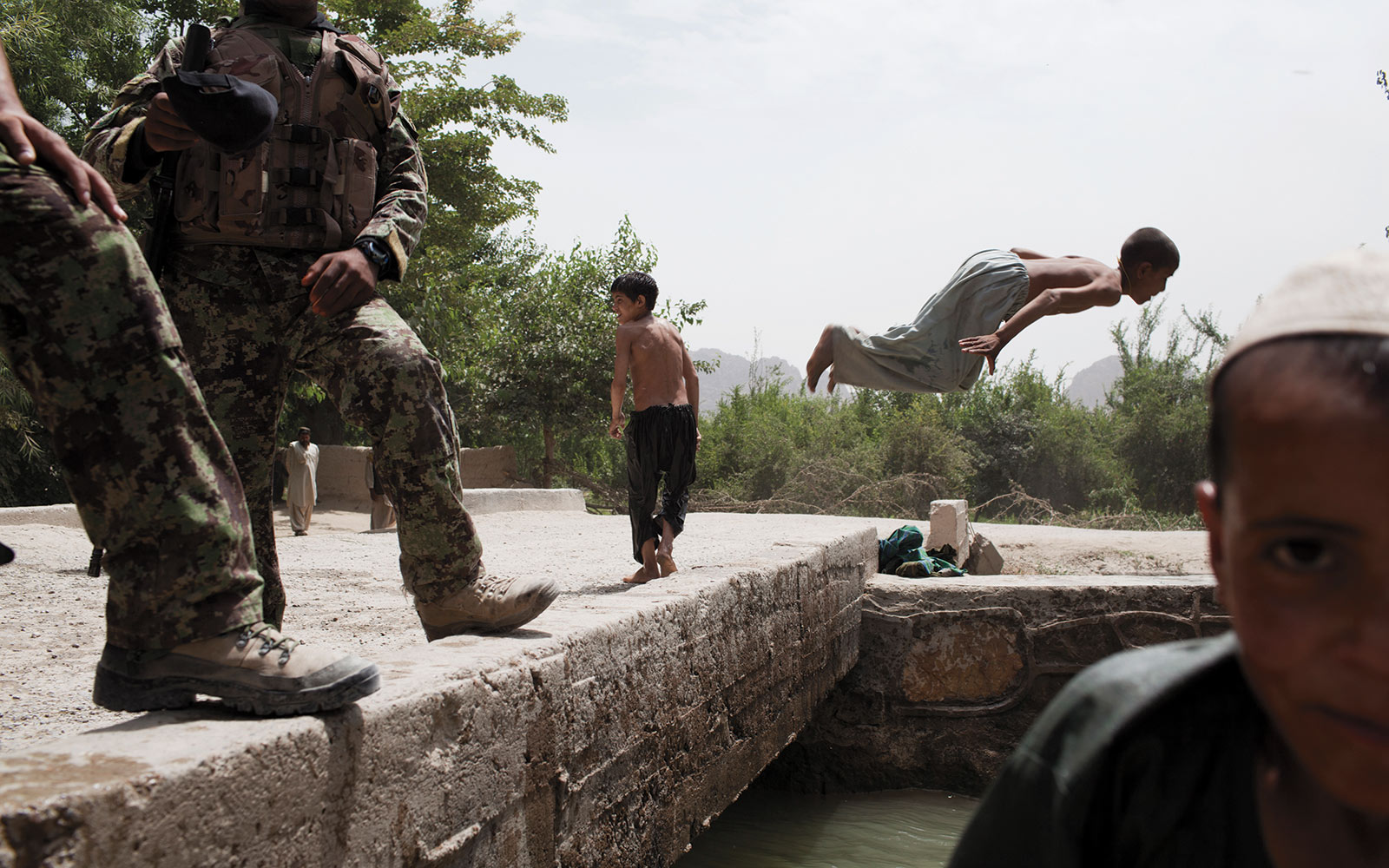
John Wendle ’02, from Youngstown, Ohio, is a reporter, photographer, and videographer based in Afghanistan. His work has appeared in TIME, GQ, The New York Times, The Telegraph, The Moscow Times, Marie Claire, and many other outlets. He majored in history at Denison before going on to pursue his master’s degree in journalism from Columbia University’s Graduate School of Journalism. Follow Wendle on Twitter @ johnwendle and at johnwendle.wordpress.com and see more of his photography at www.johnwendle.com. (This story is based on reporting Wendle previously did for TIME.)
Although U.S. involvement in Afghanistan has a lot of history, it was 9/11 that most recently propelled U.S. troops into combat in the country. Just weeks after the attacks on the World Trade Center and the Pentagon, then-President George W. Bush launched Operation Enduring Freedom. The war against global terrorism, said Bush, included the destruction of terrorist training camps and infrastructure within Afghanistan, the capture of al-Queda leaders, and the cessation of terrorist activities in the region. That mission continues today.
Other countries have supported America in this endeavor, but after 11 years of warfare, says Andrew Katz, Denison associate professor of political science, many of those countries have decreased their commitment, seeing no end in sight.
President Barack Obama aims to reduce the United States’ involvement as well. In an address in June of 2011, he announced his intention to move from a combat mission to a support mission in Afghanistan, reducing the 68,000 U.S. troops serving there to roughly 10,000 by 2014. Additionally, he said, there would continue to be an emphasis on training Afghan forces like the Afghan National Army and the Afghan Police. “But a support mission does not mean you don’t fight,” says Fadhel Kaboub, assistant professor of economics, who teaches courses in political economy. If the U.S. and NATO troops pulled out completely, the Taliban, a violent fringe group that often bills itself as “the freedom fighters,” could come back to rule the country. “There is no existing solid foundation for governance, security, or stability in Afghanistan,” says Kaboub.
Corruption within the government and ethnic infighting are major contributors to that instability. Three prominent ethnic groups, Pashtun, Tajik, and Hazara, are distributed among tribes and within 34 provinces. The divisions breed violence between the ethnicities and often among the tribes within these groups—all currently trying to work together in the Afghan Army.
And those are not the only divisions contributing to violence in the region. While some Afghans believe that American and NATO forces are necessary for stability in the country, others support a U.S. and NATO withdrawal. In some cases, these conflicts have led to “green-on- blue” attacks, in which Afghan forces turn their guns on U.S and NATO troops.
“The U.S. has put itself into a situation,” says Kaboub, “where the longer it stays, the worse the problem gets in terms of creating animosity, contributing to innocent casualties, and justifying the Taliban’s position and fueling their support base.”
This September, anti-American sentiment came to a head when riots broke out throughout the Middle East and Afghanistan, after a low-budget movie, “Innocence of the Muslims,” by a California filmmaker ridiculed the Prophet Muhammad and spewed anti- Islam sentiments. According to Katz, many in the region believed that the movie had approval from the United States government. In Kabul, hundreds of Afghans burned cars and threw rocks at a U.S. military base.
Kaboub says the video is another incident in a long line of problems between the Afghan people and the United States. “There were a lot of other issues that the Afghan people were unhappy about,” he says, including the American Drone program and the seemingly unending U.S. occupation of the country. “I don’t know how to fix the situation there, but I know it’s not going to be easy.”

Later in the week, I’m on another foot patrol. This one is led by Lt. Mike Viti. A graduate of West Point, he gave up a slot with the Buffalo Bills to go to Afghanistan. As we’re slowly patrolling down a gravel road near the Arghandab River, two young men are spotted coming out of a pomegranate orchard. Viti jogs up the line and begins to question the two men, who are carrying shovels. He pushes hard to try and figure out what they are doing there—since the orchard has been a hiding spot for insurgent weapons caches in the past. But the questioning gets bogged down because the Afghan interpreter does not quite get the gist of Viti’s questions. In the end, an Afghan Local Policeman (ALP)—the newest incarnation of an effort to lightly train and arm local pro-government fighters—ambles down the road wearing civilian clothes, parts of a uniform, and a decorated AK-47 rifle. He explains to the interpreter that these men are his sons and that they were hired to tend the orchard. Viti, frustrated but keeping his cool, has to take his new ally at his word, even though he can verify only by instinct what the militiaman is saying. The two young men are walked to the local ALP checkpoint and let go.
In Arghandab, the scene of some of the heaviest fighting of the war, President Barack Obama’s troop surge has worked— for now. The belt of rich farmland went from being a Taliban stronghold, to a bloodily contested battleground, to an area of relative stability starting in the spring of 2011. But small, everyday incidents like these—crushing plants and lack of language—strain relations between soldiers, farmers, and their erstwhile allies—the Afghan police, soldiers, and militias. In the end, all the sides know that the U.S. and NATO forces will leave—and the Afghans will be left to settle scores on their own.
For the most part, the scores are already being settled— right under the noses of the American soldiers: Masked gunmen on motorcycles execute vendettas; rulings by Taliban “shadow governors” are implemented through intimidation and night letters; and fistfights break out between ethnic Tajik and Pashtun soldiers forced to share the same small U.S. base. The fissures are there for all to see, and they are widening every day.
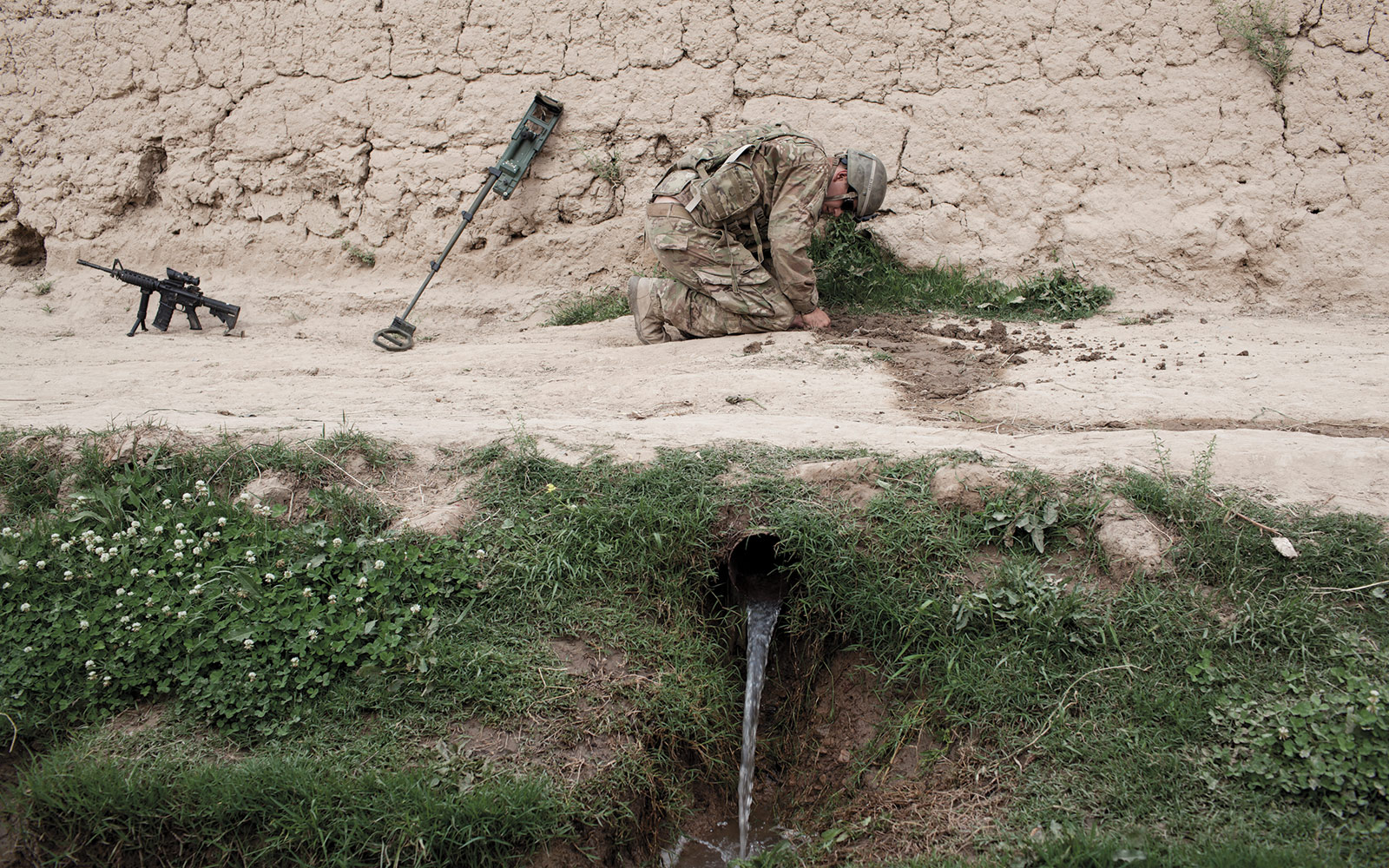
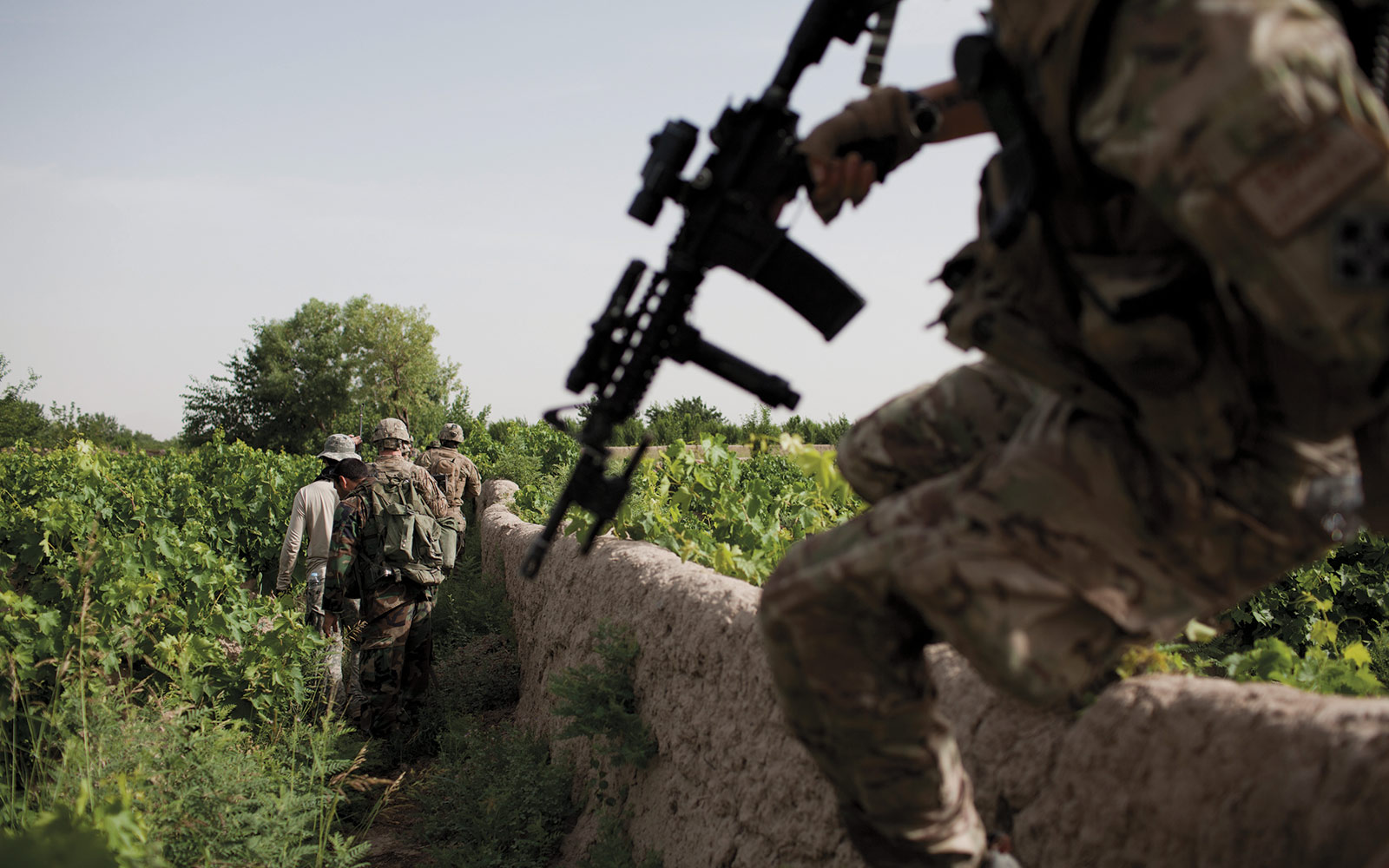
"There are still astonishing stories of personal strength here."
To counteract these and other fears, NATO met in Chicago in May, and international donors met in Tokyo in early July to talk turkey. NATO donors pledged $4.1 billion in annual military assistance and foreign governments committed more than $16 billion to Afghanistan in civilian aid for 2012-2015, meeting the fiscal gap estimated by the World Bank. It is hoped that these funds will keep history from repeating itself: It was not the Red Army’s withdrawal that caused the collapse of the Afghan communist government, but the end of Moscow’s funding with the dissolution of the USSR.
Yet part of the Tokyo funds will not be released unless Afghan President Hamid Karzai can show that corruption and graft are reduced. Both foreigners and Afghans agree that corruption is one of the biggest factors alienating the people from the government, since it keeps the government from distributing services to the people.
“The real question is whether the Afghans realize that the international community will go to Tokyo looking for excuses to not give money to Afghanistan—and Karzai’s traditional reluctance to address corruption would be one of those excuses,” Scott Smith, deputy director of Afghanistan programs at the United States Institute for Peace, a nonpartisan think tank, told me before the Tokyo International Donors Conference. “…The very real prospect of reduced international aid actually makes the threat of ‘conditionality’ (withholding aid if Afghans don’t take certain good governance actions) much more credible. In the past, the Afghans knew that we would spend money anyway because our troops were there. That entire calculus has changed, which isn’t bad, because it wasn’t particularly rational.”
In order to combat shrinking budgets shaped by donor fatigue, lack of interest, and the world financial crisis, the Afghan government says it is relying on the growth of the mining and agriculture sectors and an increase in foreign direct investment. But numerous interviews with businessmen, government officials, and analysts show these largely to be pipe dreams.
For “foreign direct investment, there’s nowhere near the infrastructure necessary (both physical and soft) for a DuPont or a GE to be building anything here, and the manufacturing you are seeing is still very low-level,” says a private investment expert for an Afghanistan-based consulting company. And, regarding “Afghan big business, donors are hesitant to work with them at all. Donor programs are typically focused on small- and medium-size enterprises, as they are considered ‘cleaner’ and less likely to have skeletons in the closet, political or otherwise, and also because it looks untoward to be providing millions in development funds to someone who is already a millionaire. It’s a paradox, because everyone wants big business and big investment, but for whatever reason, continue to fund projects that lack the management or technical capacity to execute at a large scale,” the expert said.
Aside from these massive drawbacks, the government lacks the infrastructure to collect taxes. So even if there were a business boom in Afghanistan (ignoring the point that if business were going to flourish in Afghanistan, it already would have done so in the last decade before the economic downturn and the instability that the withdrawal will cause), the government could not collect revenue from business effectively, anyway.
Yet even with children going barefoot in the snow, and most troops never “getting” counterinsurgency, the imminent threat of division within the army and police, rampant government corruption, and a lack of will and infrastructure to improve government institutions and the business environment, there are still astonishing stories of personal strength here.
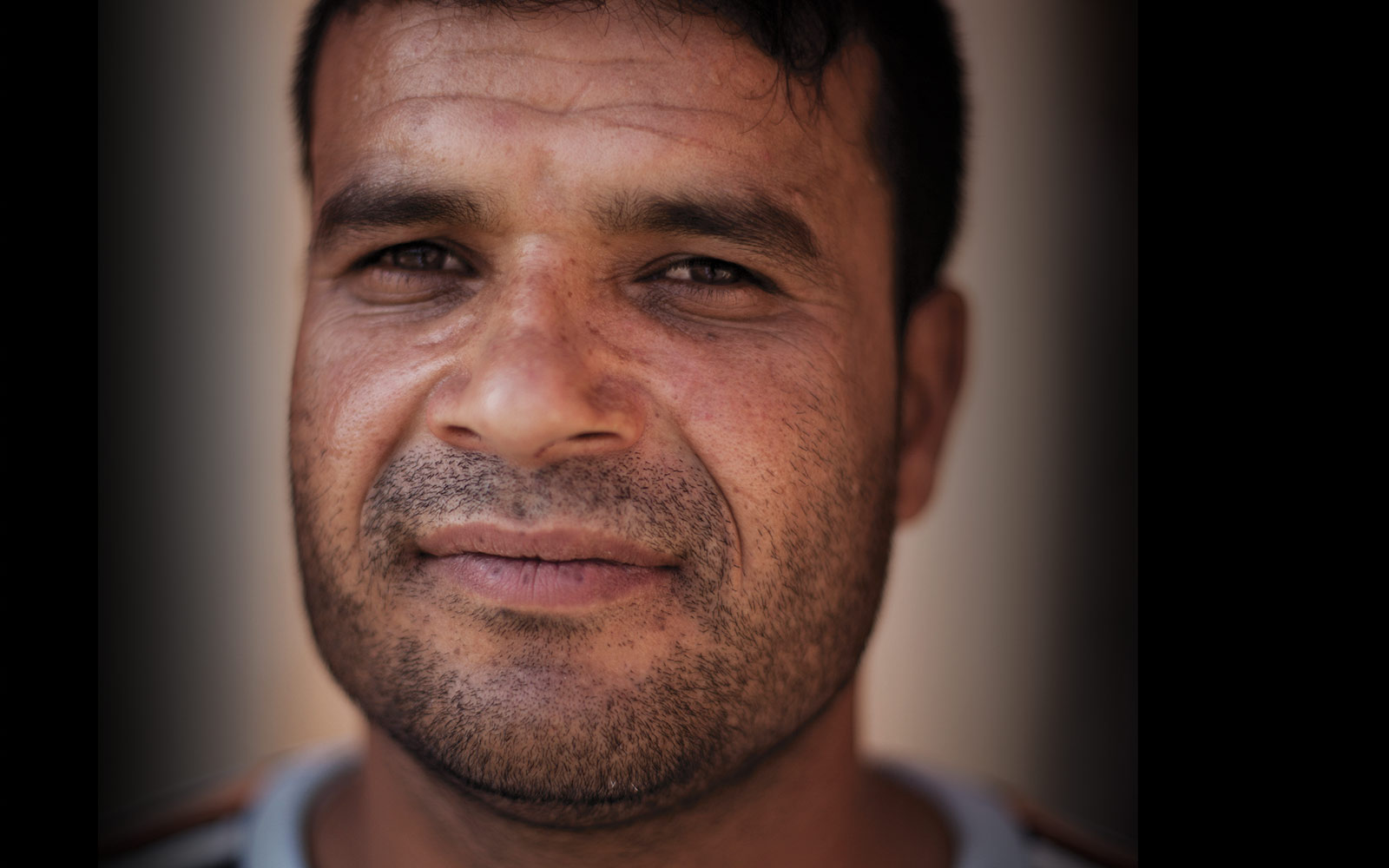
Mohammad Fahim Rahimi had his right leg amputated above the knee after he stepped on a land mine while walking down the street during the civil war. As a teenager he was into martial arts, but after the injury he became depressed and felt he had no reason to live. A friend convinced him to try weight lifting, and soon Rahimi was obsessed with it. “I didn’t miss one day of training at the gym throughout Taliban rule,” he says. He lived on a mountainside populated by other refugees from the countryside. Even during the harsh winters he would ride his bike to the gym, tying the 50-pound Chinese bicycle to his back and using his one good leg and his crutches to get up and down the refuse-strewn mountainside before and after his workout. “I’ve fallen more times than I can count,” he said.
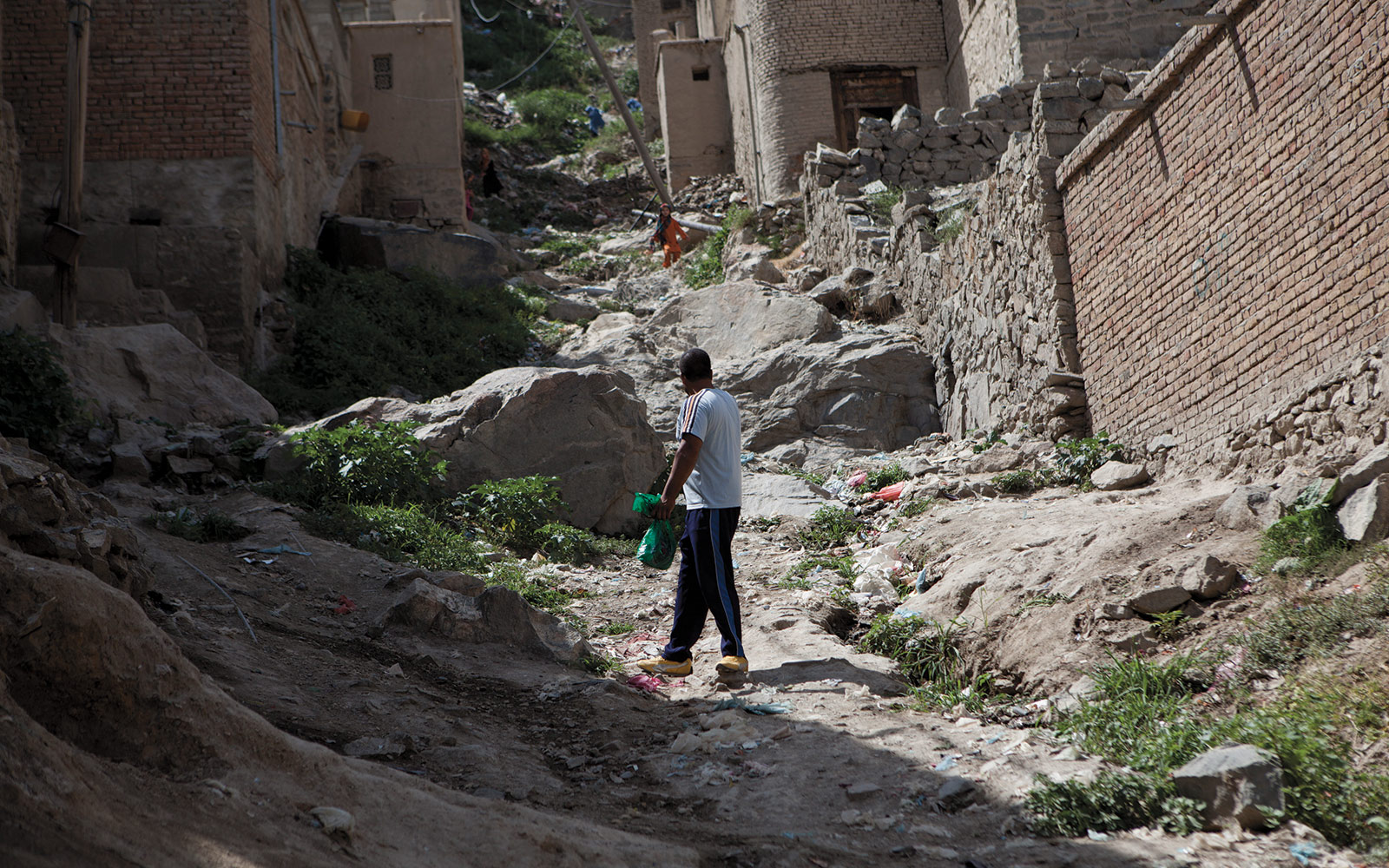 Today, that dedication has paid off. There is no doubt he has great strength, as he was Afghanistan’s only representative to the 2012 London Paralympics, where he competed in the powerlifting competition. These days he can be seen walking on an awkward prosthetic leg across trash-covered ground past the newly refurbished stadium at the Olympics complex that was once used for Taliban executions. His dumbbells are mismatched (some are made from the gears of a truck motor), and the weights he slides onto the benchpress bar are starting to crack with age. But he was here almost every day, working out, getting ready for London.
Today, that dedication has paid off. There is no doubt he has great strength, as he was Afghanistan’s only representative to the 2012 London Paralympics, where he competed in the powerlifting competition. These days he can be seen walking on an awkward prosthetic leg across trash-covered ground past the newly refurbished stadium at the Olympics complex that was once used for Taliban executions. His dumbbells are mismatched (some are made from the gears of a truck motor), and the weights he slides onto the benchpress bar are starting to crack with age. But he was here almost every day, working out, getting ready for London.
But even Rahimi, who has lost so much and then worked so hard to make a life for himself, even he is uncertain what the next few years will hold. Will his pension hold out if the government collapses? Will he ever attend another Paralympics? Unlike the barefoot children at the refugee camps who could become the next generation of Taliban fighters—disenchanted with a corrupt, poor, and unhelpful government—Rahimi’s children go to school. But if his pension goes, will his children continue to be able to attend school? Right now, he, like everyone else, is holding his breath. For the next two and a half years, the question on everyone’s lips is, “What will happen next?” Will the balloon pop, or will it miraculously stay in one piece?
John Wendle ’02, from Youngstown, Ohio, is a reporter, photographer, and videographer based in Afghanistan. His work has appeared in TIME, GQ, The New York Times, The Telegraph, The Moscow Times, Marie Claire, and many other outlets. He majored in history at Denison before going on to pursue his master’s degree in journalism from Columbia University’s Graduate School of Journalism. Follow Wendle on Twitter @ johnwendle and at johnwendle.wordpress.com and see more of his photography at www.johnwendle.com. (This story is based on reporting Wendle previously did for TIME.)
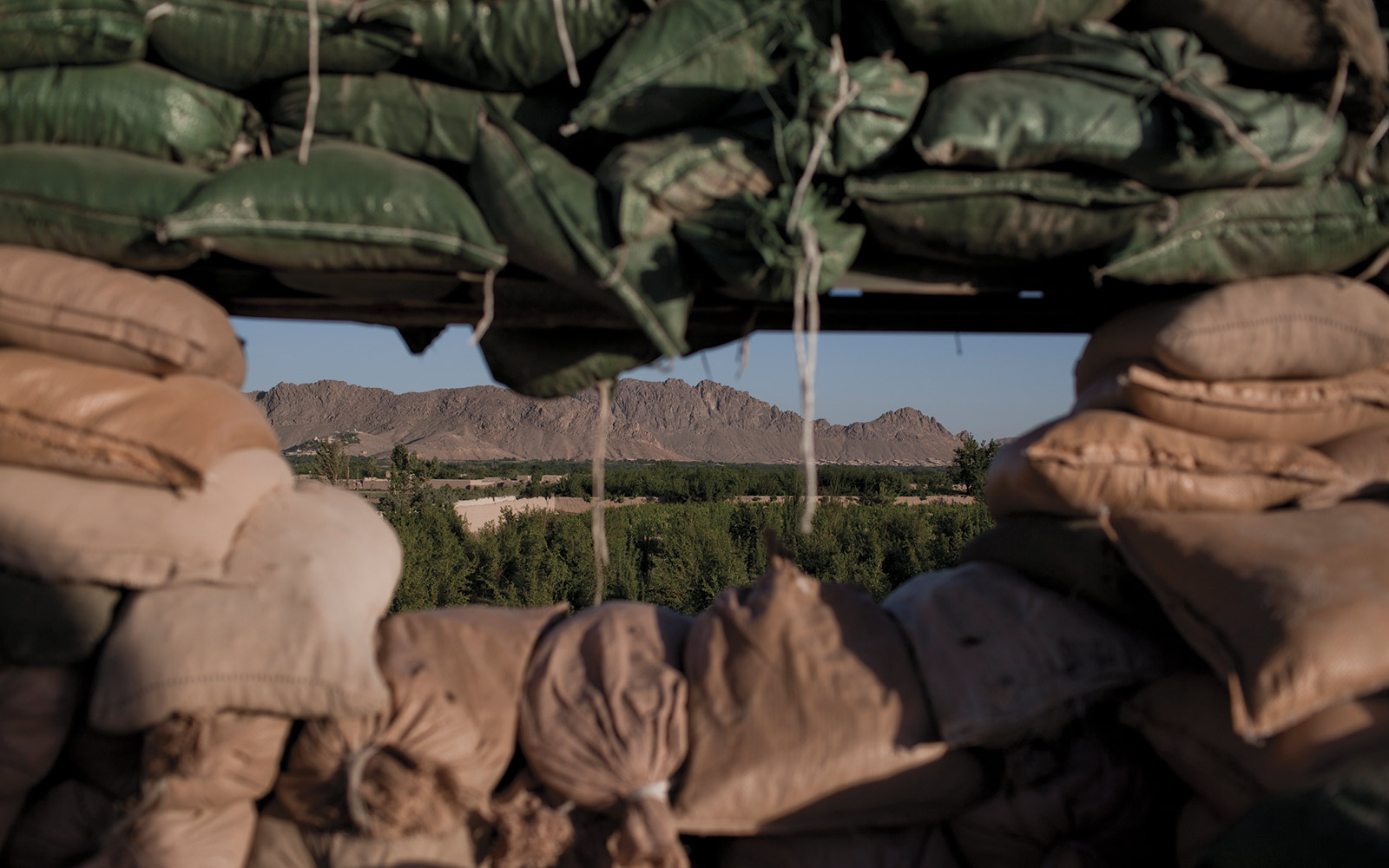
Where Do We Go From Here?
Although U.S. involvement in Afghanistan has a lot of history, it was 9/11 that most recently propelled U.S. troops into combat in the country. Just weeks after the attacks on the World Trade Center and the Pentagon, then-President George W. Bush launched Operation Enduring Freedom. The war against global terrorism, said Bush, included the destruction of terrorist training camps and infrastructure within Afghanistan, the capture of al-Queda leaders, and the cessation of terrorist activities in the region. That mission continues today.
Other countries have supported America in this endeavor, but after 11 years of warfare, says Andrew Katz, Denison associate professor of political science, many of those countries have decreased their commitment, seeing no end in sight.
President Barack Obama aims to reduce the United States’ involvement as well. In an address in June of 2011, he announced his intention to move from a combat mission to a support mission in Afghanistan, reducing the 68,000 U.S. troops serving there to roughly 10,000 by 2014. Additionally, he said, there would continue to be an emphasis on training Afghan forces like the Afghan National Army and the Afghan Police. “But a support mission does not mean you don’t fight,” says Fadhel Kaboub, assistant professor of economics, who teaches courses in political economy. If the U.S. and NATO troops pulled out completely, the Taliban, a violent fringe group that often bills itself as “the freedom fighters,” could come back to rule the country. “There is no existing solid foundation for governance, security, or stability in Afghanistan,” says Kaboub.
Corruption within the government and ethnic infighting are major contributors to that instability. Three prominent ethnic groups, Pashtun, Tajik, and Hazara, are distributed among tribes and within 34 provinces. The divisions breed violence between the ethnicities and often among the tribes within these groups—all currently trying to work together in the Afghan Army.
And those are not the only divisions contributing to violence in the region. While some Afghans believe that American and NATO forces are necessary for stability in the country, others support a U.S. and NATO withdrawal. In some cases, these conflicts have led to “green-on- blue” attacks, in which Afghan forces turn their guns on U.S and NATO troops.
“The U.S. has put itself into a situation,” says Kaboub, “where the longer it stays, the worse the problem gets in terms of creating animosity, contributing to innocent casualties, and justifying the Taliban’s position and fueling their support base.”
This September, anti-American sentiment came to a head when riots broke out throughout the Middle East and Afghanistan, after a low-budget movie, “Innocence of the Muslims,” by a California filmmaker ridiculed the Prophet Muhammad and spewed anti- Islam sentiments. According to Katz, many in the region believed that the movie had approval from the United States government. In Kabul, hundreds of Afghans burned cars and threw rocks at a U.S. military base.
Kaboub says the video is another incident in a long line of problems between the Afghan people and the United States. “There were a lot of other issues that the Afghan people were unhappy about,” he says, including the American Drone program and the seemingly unending U.S. occupation of the country. “I don’t know how to fix the situation there, but I know it’s not going to be easy.”
-Rose Schrott ‘14

